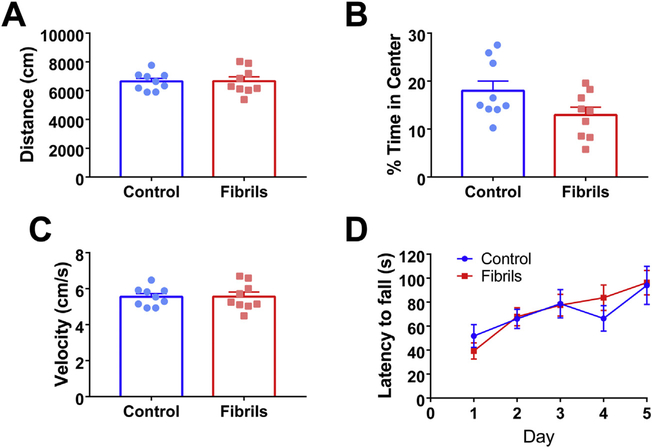Fig. 3.
Fibril-injected mice lack overt motor deficits. Mice received bilateral injections of α-syn fibrils or PBS as a control at 3–4 months of age. Six months after injection, mice were subjected to tests of motor function. In the open field test, there were no significant differences between groups in A) distance traveled (unpaired t-test: p = .97, df = 16), B) percent time in center (unpaired t-test: p = .068, df = 16), or C) velocity (unpaired t-test: p = .9742, df = 16). D) Control and fibril-injected mice showed no significant difference in latency to fall on accelerating rotarod testing (repeated measures ANOVA: p = .9044; F(1,16) = 0.0149). Graph shows average of 3 trials per day over 5 days of testing. For all groups, N = 9.

